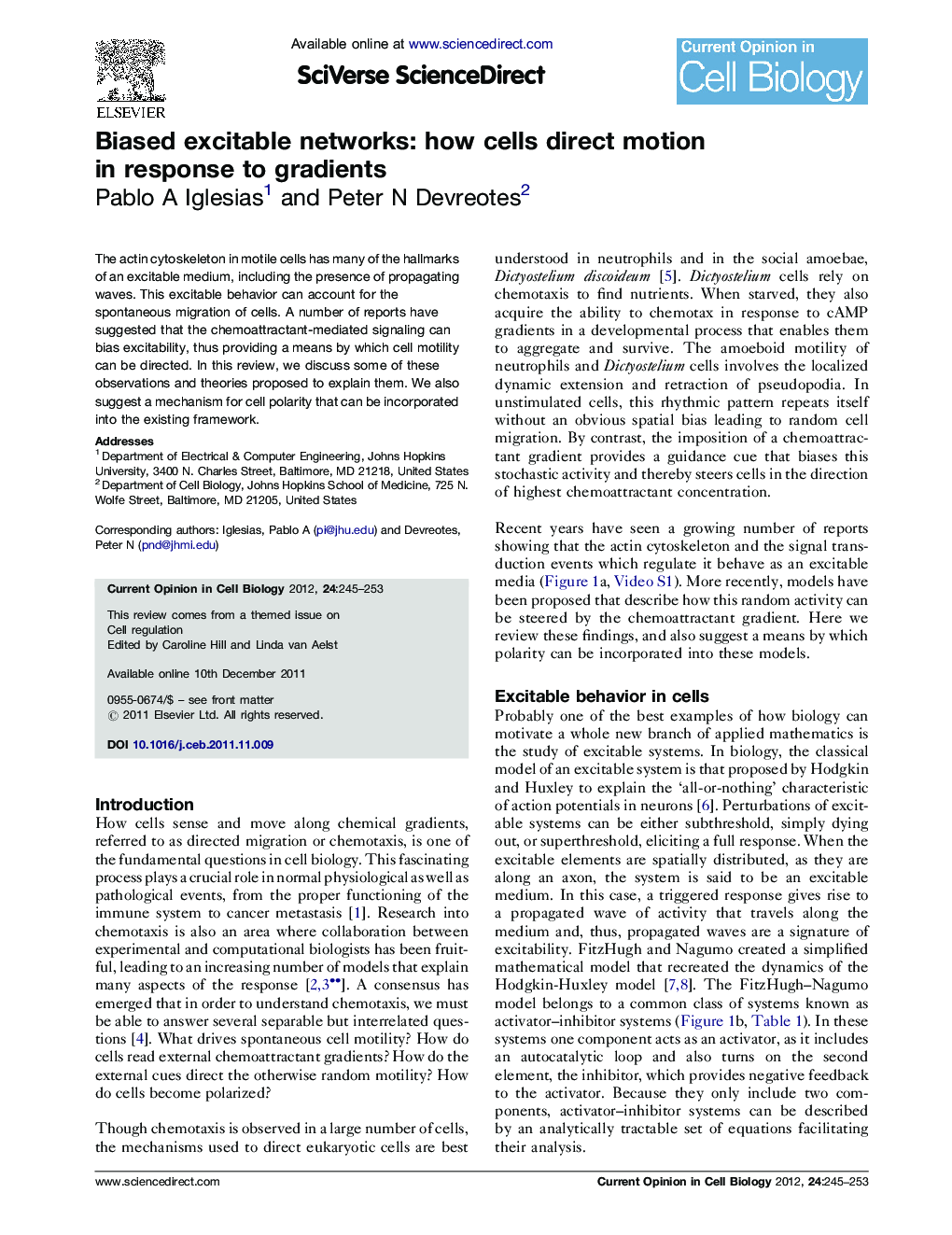| کد مقاله | کد نشریه | سال انتشار | مقاله انگلیسی | نسخه تمام متن |
|---|---|---|---|---|
| 2169765 | 1093219 | 2012 | 9 صفحه PDF | دانلود رایگان |

The actin cytoskeleton in motile cells has many of the hallmarks of an excitable medium, including the presence of propagating waves. This excitable behavior can account for the spontaneous migration of cells. A number of reports have suggested that the chemoattractant-mediated signaling can bias excitability, thus providing a means by which cell motility can be directed. In this review, we discuss some of these observations and theories proposed to explain them. We also suggest a mechanism for cell polarity that can be incorporated into the existing framework.
► The actin cytoskeleton in motile cells behaves as an excitable medium.
► This excitable behavior can account for the spontaneous migration of cells.
► Recent models show how chemoattractant signaling biases the site of excitability to direct cells.
► We demonstrate how persistence and polarization can arise in biased, excitable networks.
► We discuss molecular mechanisms giving rise to excitability.
Journal: Current Opinion in Cell Biology - Volume 24, Issue 2, April 2012, Pages 245–253